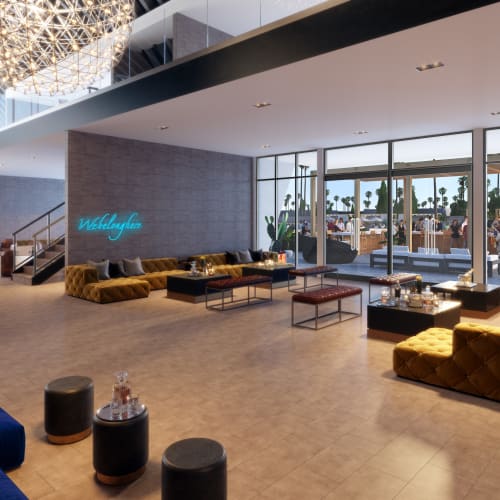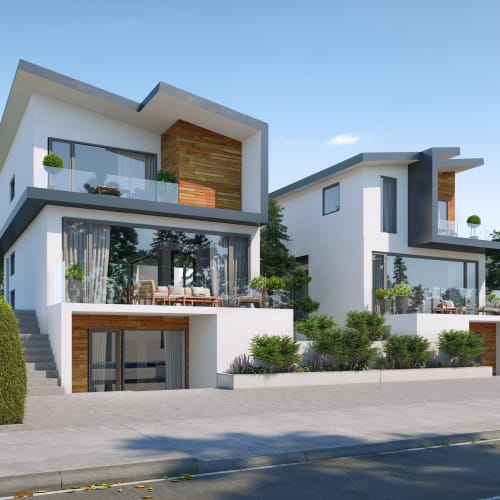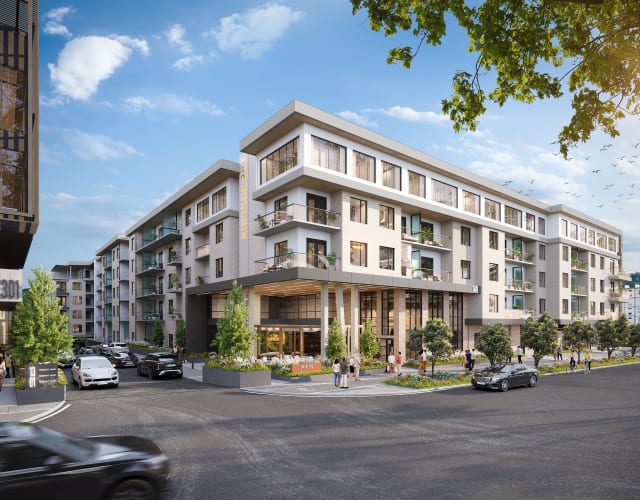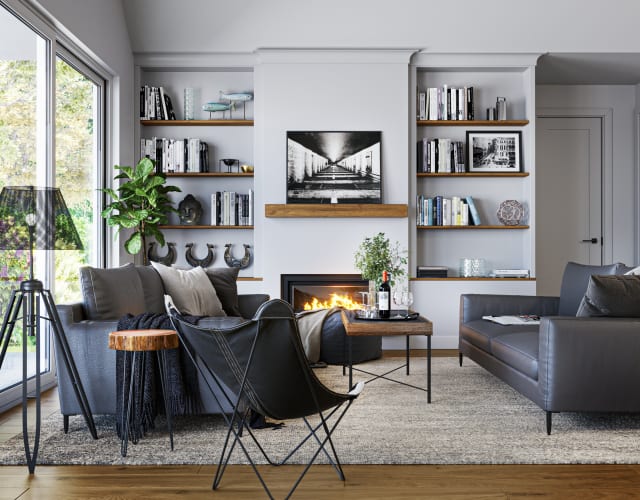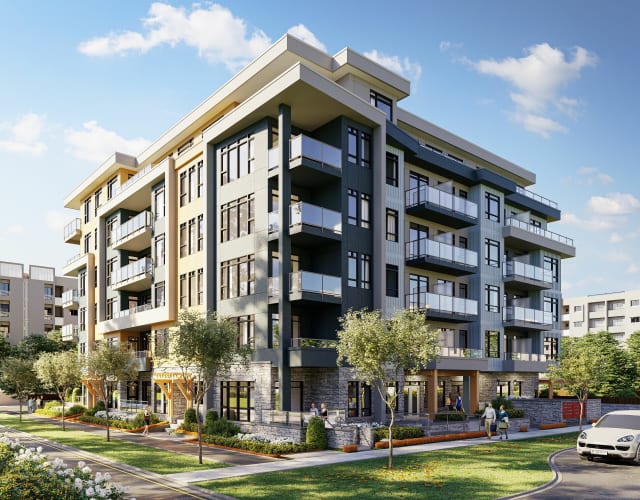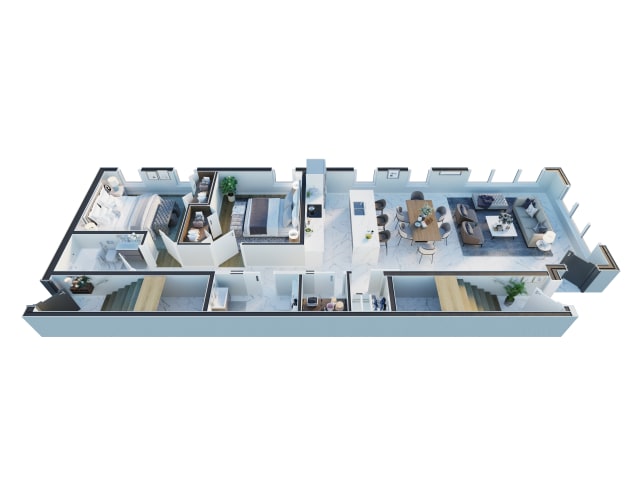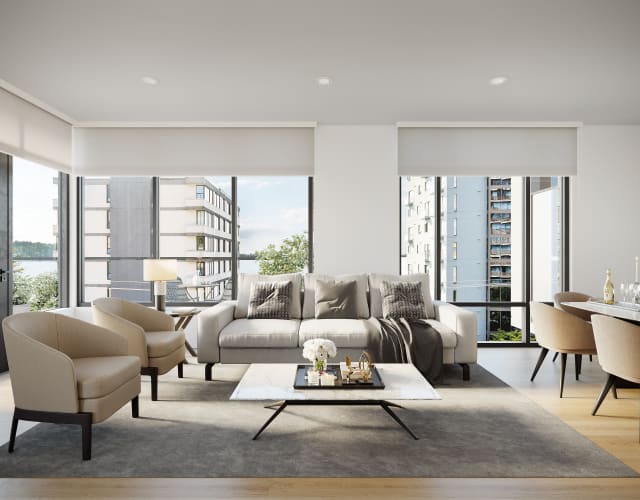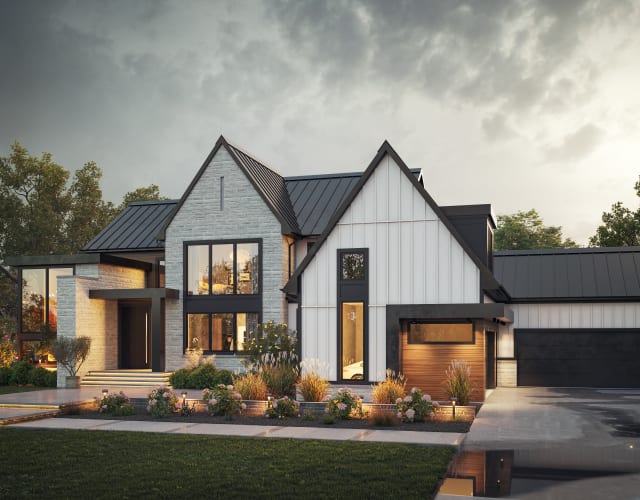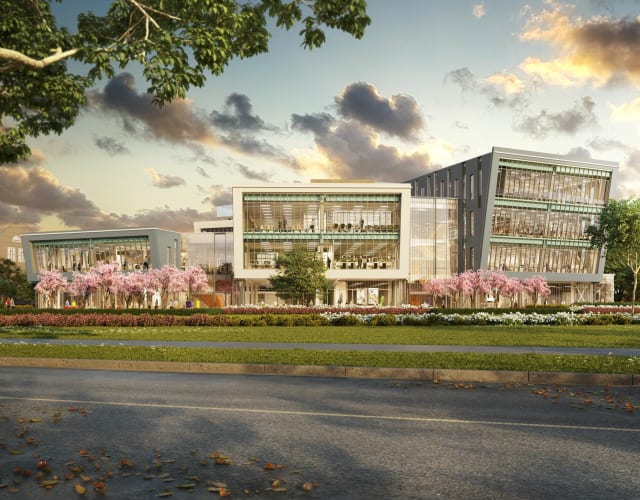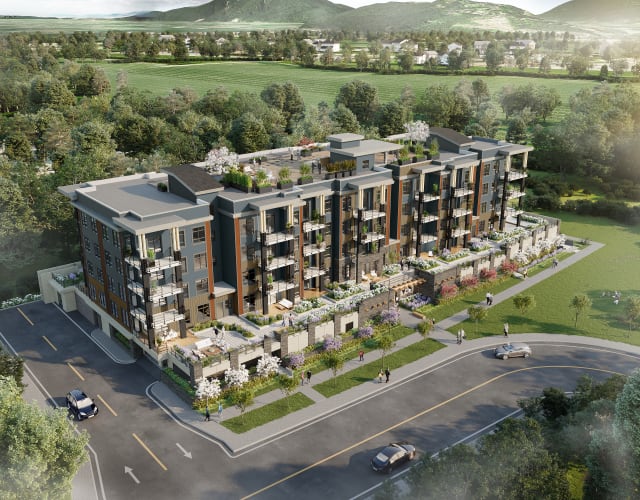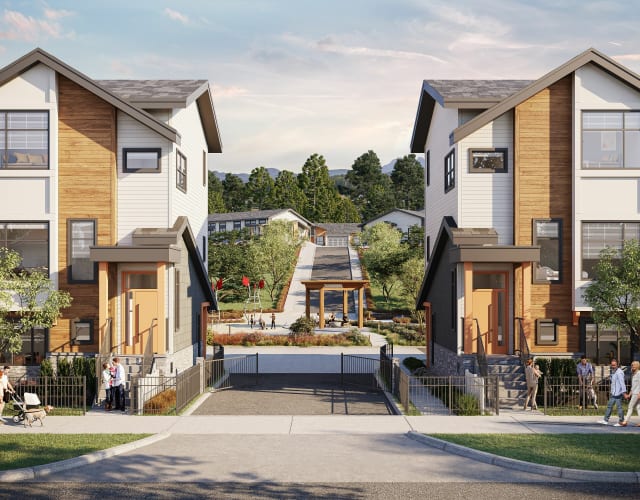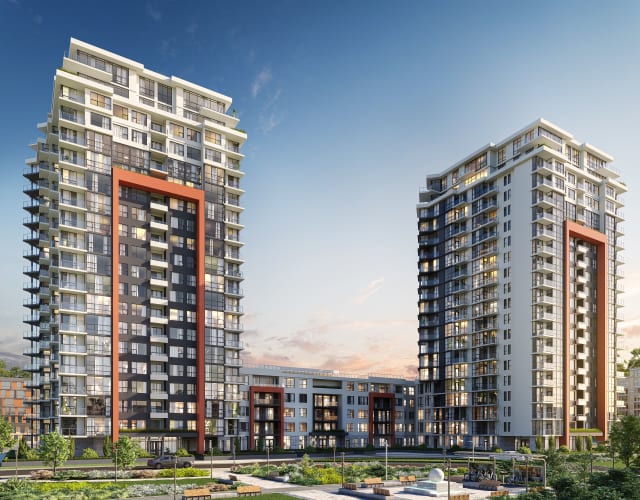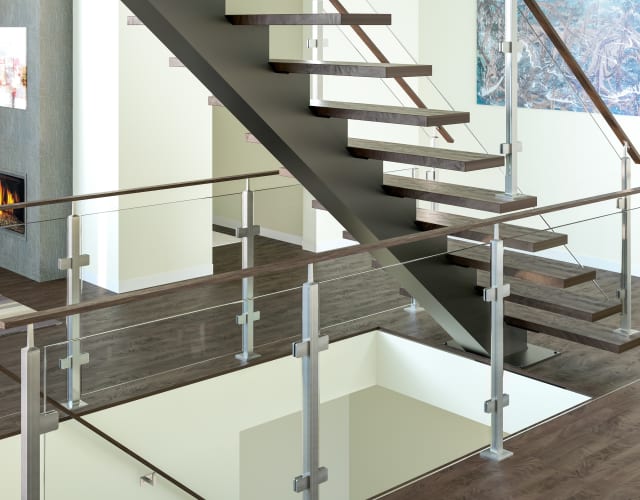Leveraging 3D Rendering to Showcase Biomimicry and Bio-Inspired Design in Architecture
by RealSpace
In the quest to create sustainable, efficient, and aesthetically pleasing buildings, architects increasingly turn to nature for inspiration. Biomimicry and bio-inspired design involve drawing insights from natural forms, processes, and ecosystems to solve complex human design challenges. This approach leads to innovative architectural solutions and fosters a deeper connection between the built environment and the natural world.

One of the most potent tools aiding architects in this endeavour is 3D rendering. By enabling precise visualization of complex designs, 3D rendering allows architects to explore and communicate bio-inspired concepts effectively. This article delves into how 3D rendering can showcase three critical aspects of biomimicry in architecture:
- Structural Biomimicry: Mimicking natural structural systems for efficiency and strength.
- Functional Biomimicry: Emulating natural processes like photosynthesis or thermoregulation in building systems.
- Ecological Integration: Designing buildings that function as part of the local ecosystem rather than separate from it.
We will also examine the Eastgate Centre in Zimbabwe as a prime example of architectural biomimicry and discuss how 3D rendering could enhance its design process and presentation.
Structural Biomimicry: Visualizing Nature's Engineering
Understanding Structural Biomimicry
Structural biomimicry involves replicating the efficient and robust structural systems found in nature to improve building performance. Examples include mimicking the lightweight yet strong structure of bird bones or the flexibility of tree branches.
The Role of 3D Rendering in Structural Biomimicry
Exploring Complex Geometries
Natural structures often feature complex geometries that are difficult to conceptualize using traditional design methods. 3D rendering software allows architects to:
- Model intricate forms: Software like Rhinoceros 3D and Grasshopper enables the creation of parametric models that replicate natural patterns such as honeycombs or spider webs.
- Analyze structural performance: Integration with simulation tools allows for stress testing and optimization of the designs.
Case Study: Designing a Bird Bone-Inspired Structure
Imagine an architect aiming to design a lightweight yet strong roof structure inspired by the internal lattice of bird bones.
- 3D Modeling: Using 3D rendering software, the architect can create a detailed lattice structure model, adjusting parameters to achieve the desired strength-to-weight ratio.
- Visualization: High-quality renderings showcase the aesthetic appeal of the biomimetic design, highlighting the intricate patterns and interplay of light and shadow.
- Communication: Renderings can be used in presentations to clients and stakeholders to explain the concept and benefits of the design.
Benefits of 3D Rendering in Structural Biomimicry
- Precision: Allows for accurate replication of natural forms.
- Iteration: Facilitates rapid prototyping and refinement of designs.
- Presentation: Enhances the ability to communicate complex ideas visually.
Functional Biomimicry: Simulating Natural Processes
Understanding Functional Biomimicry
Functional biomimicry involves emulating natural processes to improve building systems. Examples include mimicking photosynthesis for energy generation or thermoregulation mechanisms found in animals and plants.
The Role of 3D Rendering in Functional Biomimicry
Simulating Environmental Interactions
3D rendering software can model how a building interacts with its surroundings when combined with environmental simulation tools.
- Thermal Analysis: Tools like Autodesk CFD allow architects to simulate airflow and heat transfer, which is essential for designing natural ventilation systems inspired by termite mounds or cactus cooling mechanisms.
- Solar Studies: Rendering software can simulate sunlight penetration and shading, aiding in the design of facades that mimic leaves' ability to filter sunlight.
Case Study: Emulating Photosynthesis in Facade Design
Consider a building facade designed to mimic the process of photosynthesis by incorporating photovoltaic cells and shading devices.
- 3D Visualization: Renderings can depict how the facade's elements adjust throughout the day, capturing sunlight efficiently.
- Dynamic Simulation: Animations demonstrate the movement of shading devices, providing a clear understanding of the functional aspects.
- Material Representation: High-fidelity textures and materials in the rendering showcase the technological and aesthetic qualities of the facade.
Benefits of 3D Rendering in Functional Biomimicry
- Visualization of Invisible Processes: Makes abstract concepts like energy flow or thermodynamics tangible.
- Stakeholder Engagement: Helps non-technical audiences grasp the benefits of bio-inspired systems.
- Design Optimization: Identifies potential issues and improvements before construction.
Ecological Integration: Visualizing Harmony with Nature
Understanding Ecological Integration
Ecological integration involves designing buildings that operate as part of the local ecosystem, promoting biodiversity, and minimizing environmental impact.
The Role of 3D Rendering in Ecological Integration
Site Contextualization
3D renderings can incorporate detailed site models, including existing vegetation, topography, and wildlife habitats.
- Contextual Modeling: Software like SketchUp and Lumion allow for the integration of buildings into realistic environmental contexts.
- Landscape Design: Renderings can depict how green roofs, vertical gardens, or water features blend with the natural surroundings.
Case Study: Designing a Building with Integrated Wetlands
An architect proposes a wetland building for natural wastewater treatment.
- 3D Visualization: Renderings show how the wetlands are integrated into the site, including water flow and plant life.
- Environmental Impact: Visual simulations illustrate how the design supports local wildlife and promotes biodiversity.
- Educational Tool: Renderings can be used to educate the public about the building's ecological functions.
Benefits of 3D Rendering in Ecological Integration
- Holistic Visualization: Demonstrates the interplay between the building and its environment.
- Impact Assessment: Helps assess potential environmental impacts and benefits.
- Community Involvement: Engages the community by providing clear visuals of proposed ecological features.
The Eastgate Centre: A Biomimicry Success Story Enhanced by 3D Rendering
Overview of the Eastgate Centre
The Eastgate Centre in Harare, Zimbabwe, is a commercial building renowned for its innovative passive cooling system inspired by termite mounds. Termite mounds maintain a constant internal temperature despite external fluctuations by regulating airflow.
How 3D Rendering Could Enhance the Eastgate Centre's Design and Presentation
Design Development
- Modeling the Cooling System: 3D rendering software could model the building's ventilation shafts and corridors, allowing architects to visualize and optimize the airflow patterns.
- Simulation of Thermal Performance: Computational Fluid Dynamics (CFD) simulations could predict the building's internal temperatures under various conditions.
Visualization and Communication
- Exploded Views: Renderings showing the building's internal structure and airflow pathways make explaining the concept to stakeholders easier.
- Comparative Analysis: Visual comparisons between the termite mound structure and the building design highlight the biomimicry aspects.
Marketing and Education
- Public Presentations: High-quality renderings and animations could be used in marketing materials to showcase the building's innovative design.
- Educational Outreach: Visual tools help educate the public and other professionals about the benefits of biomimicry in architecture.
The Potential Impact of 3D Rendering on Biomimetic Projects Like the Eastgate Centre
- Enhanced Understanding: Helps all parties involved to grasp complex bio-inspired systems.
- Informed Decision-Making: Visual simulations inform design choices and potential modifications.
- Inspiration for Future Projects: Demonstrates the feasibility and benefits of biomimicry, encouraging its adoption in other projects.
Conclusion
3D rendering is an invaluable tool in showcasing and advancing biomimicry and bio-inspired design in architecture. By providing detailed visualizations and simulations, it allows architects to explore complex natural forms and processes, optimize designs, and communicate ideas effectively to clients, stakeholders, and the public.
Whether it's replicating the structural efficiency of natural forms, emulating the functional processes of ecosystems, or integrating buildings seamlessly into their environments, 3D rendering brings these concepts to life. The example of the Eastgate Centre illustrates how biomimetic principles can lead to groundbreaking architectural solutions and how 3D rendering could enhance such projects.
As we face growing environmental challenges, the combination of biomimicry and advanced visualization tools like 3D rendering offers a pathway to more sustainable, efficient, and harmonious architectural practices. By continuing to draw inspiration from nature and leveraging technology to realize these inspirations, architects can create buildings that meet human needs and contribute positively to the natural world.
Key Takeaways
- 3D rendering bridges the gap between abstract biomimetic concepts and tangible designs.
- Structural biomimicry benefits from precise modelling and visualization of complex natural forms.
- Functional biomimicry relies on simulations to demonstrate and optimize natural processes in building systems.
- Ecological integration is enhanced by renderings that contextualize buildings within their natural environments.
- Case studies like the Eastgate Centre highlight the potential of biomimicry in architecture and how 3D rendering could further amplify its impact.
- Embracing 3D rendering in biomimicry promotes innovation, sustainability, and a deeper connection between humans and nature in architectural design.


